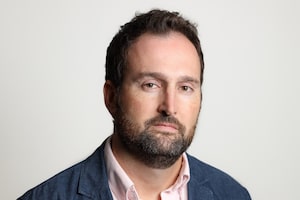The College of Physicians and Surgeons of Ontario (CPSO) says it will allow doctors trained and certified in the U.S. to skip exams and begin working immediately.Fred Lum/The Globe and Mail
Ontario’s physician regulator is making it easier for doctors who were trained in the U.S., Ireland, Australia and Britain to practise medicine in the province, as jurisdictions around the country compete to remove licensing barriers in an effort to address chronic shortages in health care.
The College of Physicians and Surgeons of Ontario (CPSO), which licenses and oversees more than 35,000 practising physicians, says it will allow doctors trained and certified in the U.S. to skip exams and begin working immediately. It’s also removing supervision and assessment requirements for family doctors from the U.S., Ireland, Australia and Britain if they have already been approved by the College of Family Physicians of Canada, the national certification body, allowing them to practice independently more quickly.
Alberta recently made a similar move, with the announcement of a pilot project targeting physicians from those four countries, offering them a simpler path to licensing. Last month, Nova Scotia became the first province in Canada to allow physicians who were trained in the U.S. to skip certification exams and begin working immediately.
A recent Globe and Mail investigation found Canada is increasingly losing foreign-trained physicians to other countries, as other developed nations lower barriers to licensing and step up recruitment. And fewer international medical graduates are choosing to start careers in Canada: the number of international applicants to entry-level residency positions has fallen 40 per cent between 2013 and 2022.
Groups that represent foreign-trained doctors say they’re happy Canada’s regulatory colleges are beginning to remove barriers for some physicians. But they note that there are still thousands of physicians who were trained outside the country and are unable to find paths to licensing.
They argue more must be done to remove obstacles that prevent internationally trained doctors from working, at a time when staffing shortages are causing significant problems for Canadian patients, clinics and hospitals.
“We’re glad there’s going to be some fast-tracking. But there’s a very serious concern it’s excluding the vast majority of people who come from other countries,” said Rosemary Pawliuk, a lawyer and spokesperson for the Society of Canadians Studying Medicine Abroad, an advocacy group for foreign-trained physicians.
“It’s still very much a system that rewards white, Commonwealth countries. And if you don’t come from one of those, the barriers are still very much up for you.”
Of the 5,948 new physicians who were registered in Ontario in 2021, 296 came from Saudi Arabia, making it the province’s top origin country for foreign-trained doctors. Ireland produced the second highest number, at 284. It was followed by Britain (133), India (129), Egypt (88), the U.S. (82) and Australia (62).
The college was unable to estimate how many more physicians may be able to begin working in Ontario under the new measures announced Tuesday.
Census records estimate that there are nearly 13,000 foreign-trained physicians living in Ontario but not working in their field because of licensing hurdles and other barriers. A report produced for the Ontario College of Family Physicians suggests nearly 15 per cent of the province’s population, or about 2.2 million people, is without regular access to a family doctor.
Shae Greenfield, a spokesperson for the CPSO, said family physicians from the U.S., Ireland, Australia and Britain are being given preferential treatment because the College of Family Physicians of Canada has deemed their training to be equivalent to Canada’s. He said the idea that these people are particularly well suited to the Canadian system is supported by the experiences of senior Canadian physicians, who supervise foreign-trained doctors when they first enter the health care system here.
Yet there is significant disagreement within the Canadian medical community over rules that control who can and can’t be licensed, which some say discriminate against physicians who were trained elsewhere. Ms. Pawliuk argued regulators are restricting doctors from some countries as part of a policy to control health care spending by rationing the supply of physicians.
“It’s almost like you’ve got a bucket, and they’re pouring water into it, but they’ve ensured there’s a lot of holes in it so the bucket never fills,” she said.
Canadian and U.S.-trained medical graduates continue to get preference for residency positions, leaving vacancies that students from other countries could be filling, Ms. Pawliuk said. Across Canada this year, 268 family medicine residency positions went unfilled. That was the highest number ever, according to data from the Canadian Resident Matching Service.
Makini McGuire-Brown, a Jamaican-educated physician who chairs an advocacy group called Internationally Trained Physicians of Ontario, said foreign doctors remain an underutilized workforce in Canada. She said the announcement by the Ontario regulatory college follows a pattern of regulators favouring certain “approved jurisdictions” over others.
“The CPSO’s new policy is discriminatory and is the continuation of a pattern,” she said. “Instead of the CPSO improving upon age-old discrimination against less Eurocentric countries, they continue the trend.”
 Greg Mercer
Greg Mercer